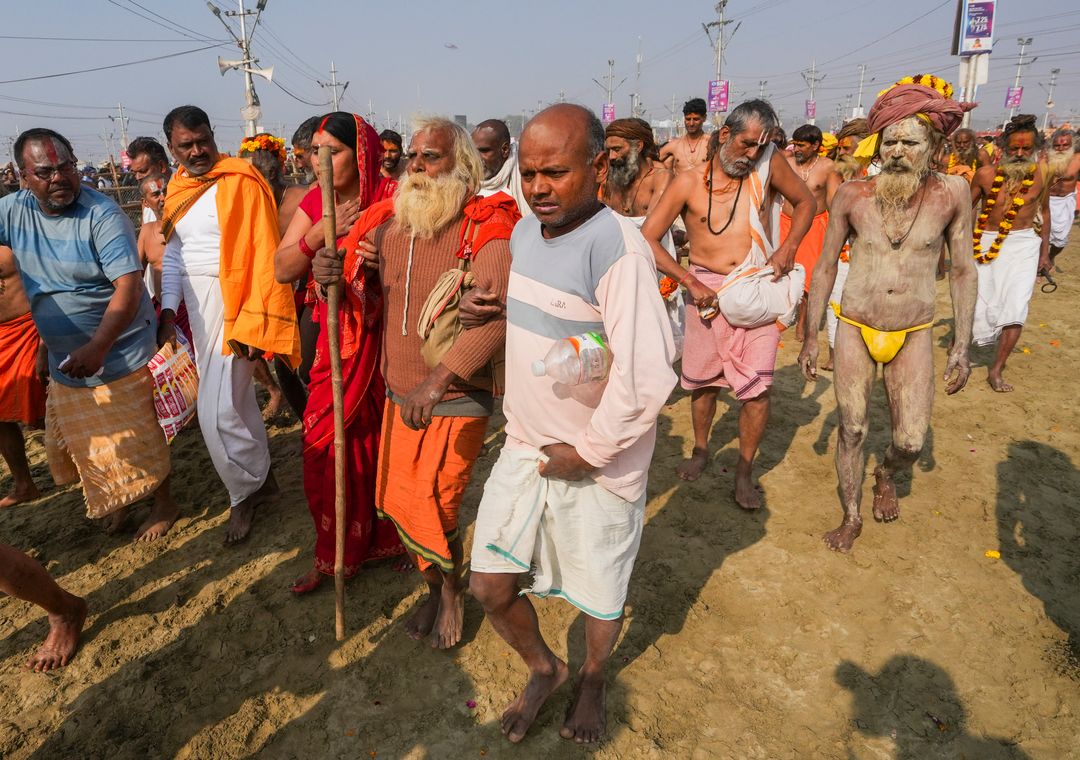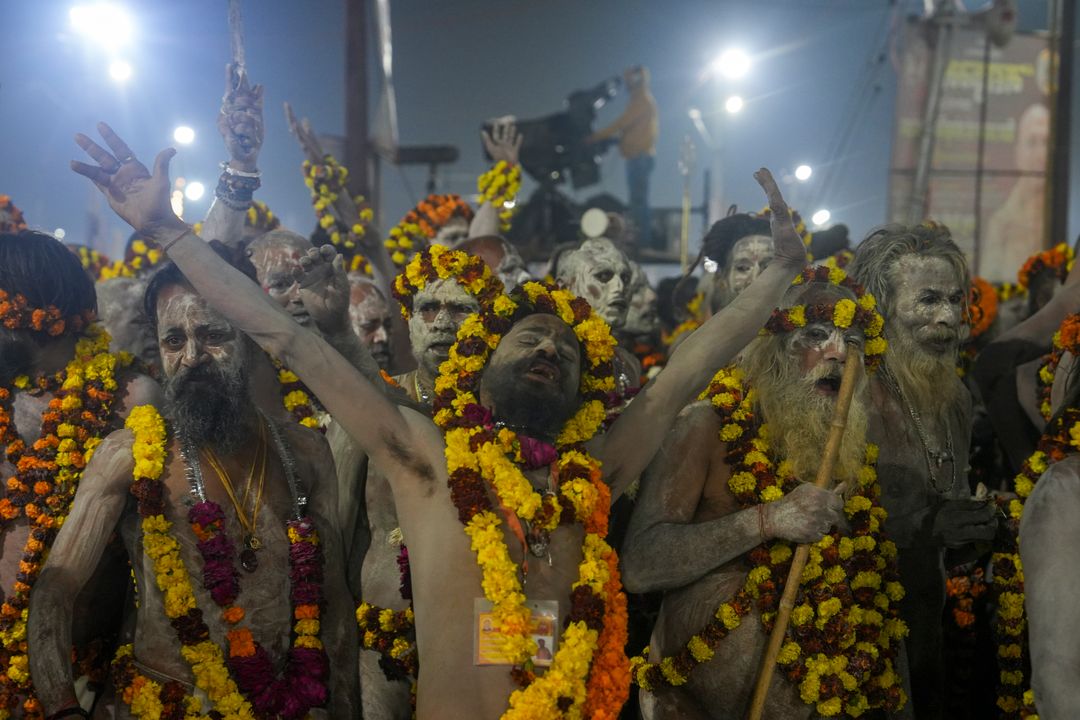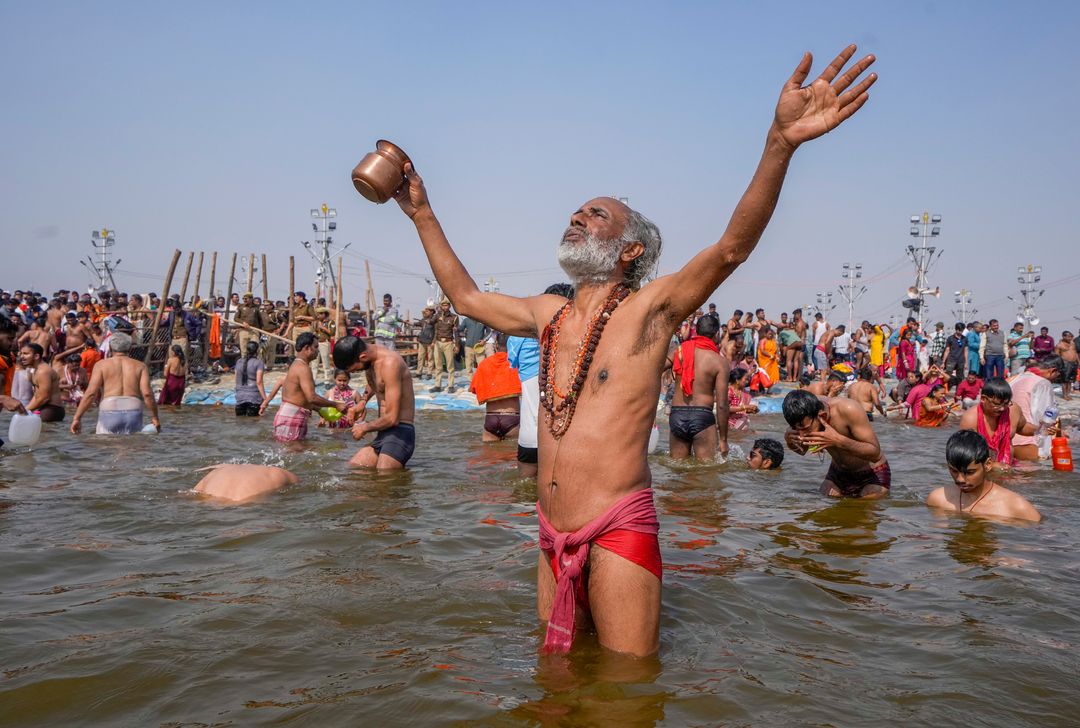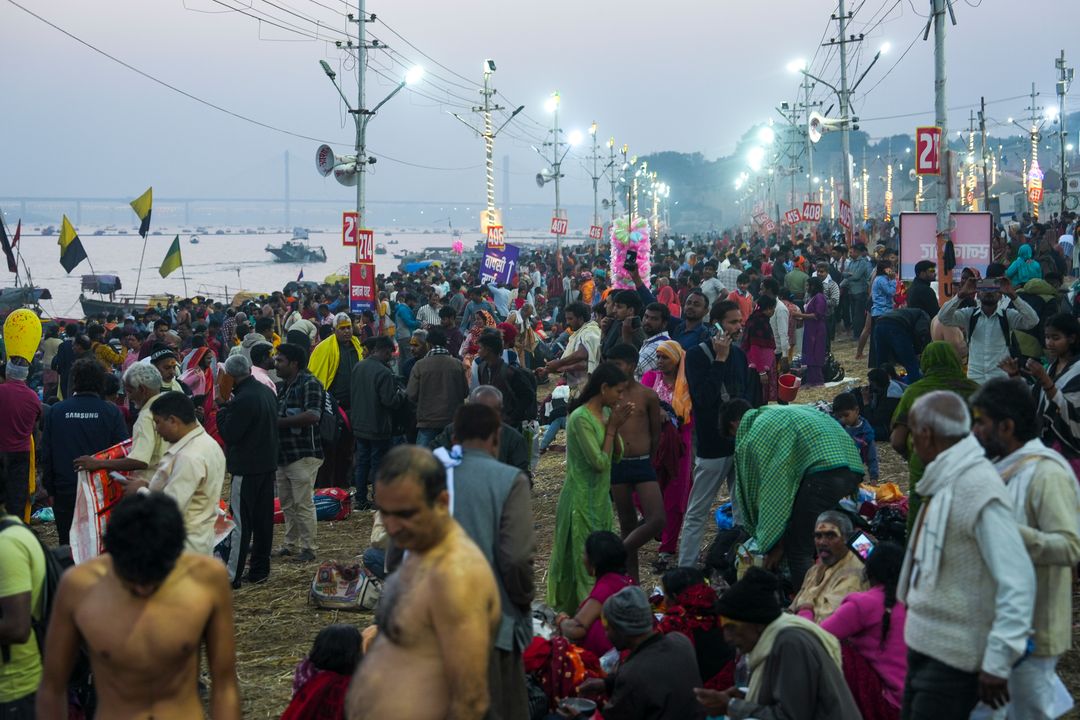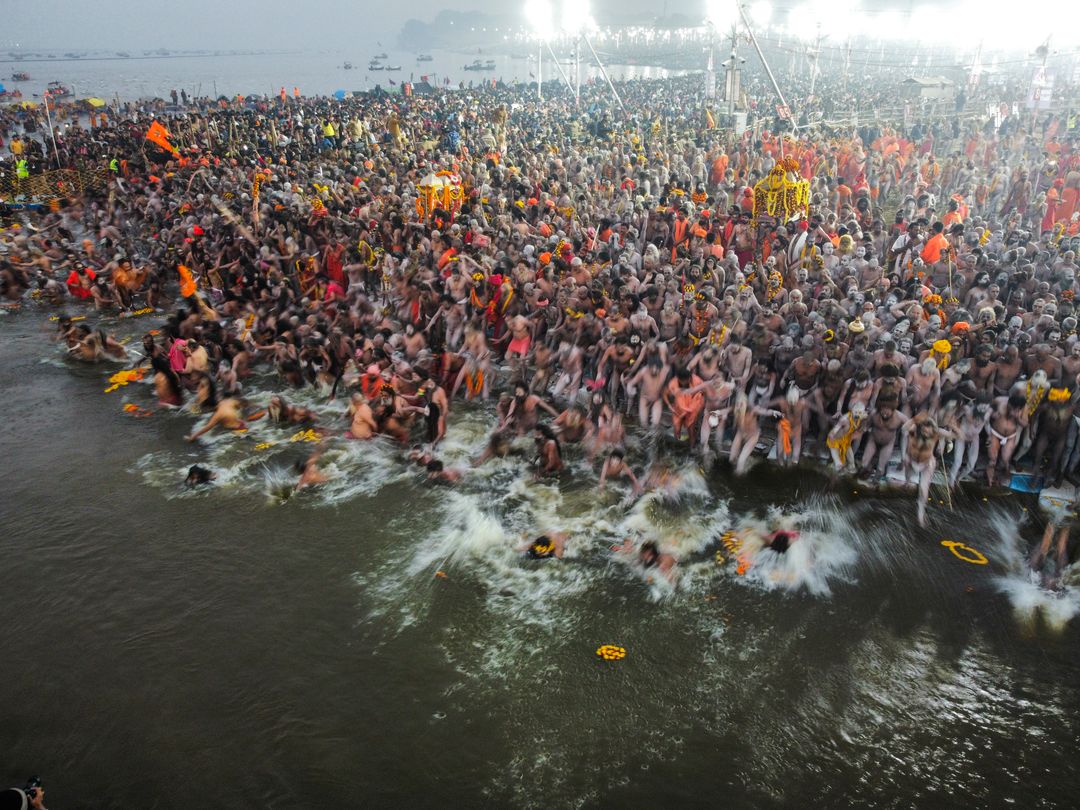
Mahakumbh Nagar, Feb 3 (PTI) – The third ‘Amrit Snan’ at the Maha Kumbh on Monday unfolded smoothly, drawing over 2.57 crore devotees by evening on the auspicious occasion of Basant Panchami. The event also marked the resumption of grand akhara processions, which had been paused following a tragic stampede on January 29, claiming at least 30 lives.
Massive Turnout for Holy Dip
By 8 AM, over 62.25 lakh pilgrims had taken a dip at the Sangam, the sacred confluence of the Ganga, Yamuna, and the mythical Saraswati. By 8 PM, this number had surged past 2.57 crore, according to official estimates from the Uttar Pradesh government. The total footfall for the day was expected to reach five crore.Following the Mauni Amavasya tragedy, the state government ramped up security with Chief Minister Yogi Adityanath instructing officials to enforce a ‘zero-error’ approach. Unlike the previous mass bathing event, where pressure built up at the Sangam, many devotees chose to bathe at alternative ghats, demonstrating self-awareness amid heightened security.
Security and Crowd Control Measures
Chief Minister Adityanath personally monitored the situation from Lucknow starting at 3:30 AM. According to DIG (Maha Kumbh) Vaibhav Krishna, additional forces were strategically deployed at all pressure points to ensure smooth crowd management."Everything is running smoothly today," Krishna remarked while conducting pre-dawn patrolling in the Mela area. Later in the day, he and other senior officers surveyed the Maha Kumbh grounds on horseback to assess the situation.
Security was bolstered with personnel from police, PAC, STF, ATS, paramilitary forces, and bomb disposal squads stationed at key locations, including intersections, pontoon bridges, Akhara routes, and ghats. Water police, trained divers, SDRF, NDRF, and flood response teams were actively monitoring the Sangam and adjacent ghats.
Technology played a crucial role in surveillance, with CCTV cameras, drones, and real-time monitoring from the Integrated Command Control Centre ensuring oversight. Additionally, public announcements guided devotees on safety protocols, while 36 designated parking zones helped reduce walking distances to the bathing areas.
Akhara Processions and Ritual Bathing
The day began with seers from various akharas, including the ash-smeared Naga sadhus, leading their ceremonial processions toward the Triveni Sangam. By 3 PM, most akharas had completed their ritual dips and returned to their camps, with helicopters showering rose petals upon the seers and pilgrims.Juna Akhara Peethadhishwar Acharya Mahamandaleshwar Avdheshanand Giri Maharaj noted the event’s global significance, stating, "The entire world is looking at India, at our social harmony and spiritual values."
The Amrit Snan, previously called Shahi Snan, followed a pre-determined sequence, with three sects—Sanyasi, Bairagi, and Udaseen—participating in the holy dip:
- Sanyasi Akharas (4 AM - 8:30 AM): Led by Panchayati Akhara Mahanirvani, Shambhu Panchayati Atal Akhara, Taponidhi Panchayati Niranjani Akhara, among others.
- Bairagi Akharas (8:25 AM - 12:35 PM): Including All India Panch Nirvani Ani Akhara, All India Panch Digamber Ani Akhara, and All India Panch Nirmohi Ani Akhara.
- Udaseen Akharas (Post-12:35 PM): Concluding with Panchayati Naya Udaseen Akhara, Panchayati Akhara Bada Udaseen Nirvana, and Panchayati Nirmal Akhara.
The akharas moved in grand processions, led by their mahants and mahamandaleshwars on ornately decorated chariots carrying their ‘Isht Dev’ (cherished deity) in palanquins. Hundreds of Naga sadhus, covered only in ash, along with other seers adorned with traditional ornaments and holy insignias, joined in the march to the Sangam.
Voices from the Kumbh
Pilgrims from across the world shared their spiritual experiences at the Maha Kumbh:- Sarthak from Delhi: "I feel spiritual after coming here. My mind found peace after completing the snan."
- Niranjan Mishra from Nepal: "The arrangements and police assistance were impressive."
- Crystal from Belgium: "I feel very happy to be here. It's special and divine."
- Meenakshi Giri from Russia: "This is a very holy moment of my life. I have been following Sanatan Dharma for 17 years."
A Historic Maha Kumbh Under Rare Celestial Alignment
Held once every 12 years, the Maha Kumbh Mela is witnessing an unprecedented spiritual fervor. This year’s event is marked by the rare ‘Triveni Yog’, a celestial alignment that occurs once in 144 years, making the occasion particularly auspicious.
The government reported the highest single-day turnout on Mauni Amavasya (Jan 29) with 8 crore devotees taking a dip. Other key bathing days saw:
- Makar Sankranti (Jan 14): 3.5 crore pilgrims
- January 30 & February 1: Over 2 crore each
- Paush Purnima (Jan 13): 1.7 crore
Since the Maha Kumbh’s commencement on January 13, over 34.97 crore devotees have visited the grand spiritual gathering.
With Monday’s Amrit Snan being the last of the three, two more special bathing dates remain before the event concludes on February 26:
- February 12 (Maghi Purnima)
- February 26 (Mahashivratri)
